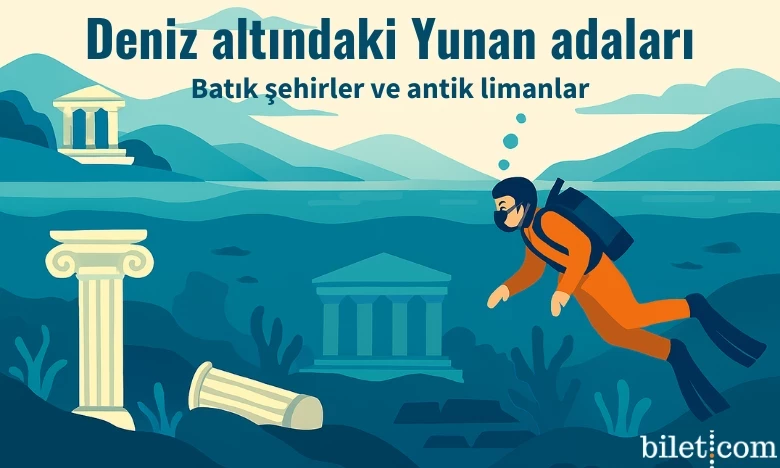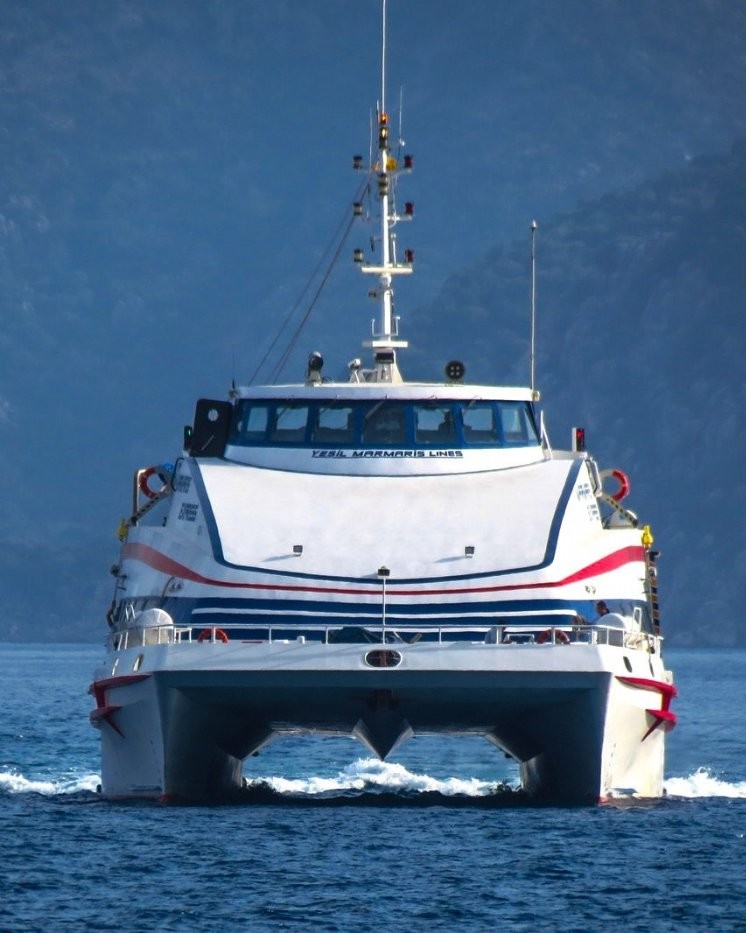Pavlopetri: A city plan buried in time
Access and ethics: Pavlopetri is under strict protection and is not open to freediving or dive tourism.
What to do: Explore the area from the ground; check out displays at local museums; watch virtual tours.
What not to do: Attempts to “get a closer look” with a snorkel, dropping anchors, flying low with a drone.
What it feels like: A past clinging to the present, just beneath the water. When the wind dies down and the water becomes like a mirror, that feeling of "someone is going to open the door right now."
Olous: The quiet sunken harbour of Elounda (Crete)
On the coast of Elounda, when the water is clear as milk in the early morning light, the stones of Olous stand out. The lines of an old road, the foundations of walls, and the ruins that run parallel to the shore are enough to evoke the image of a once bustling port.
Snorkeling experience:
Entry: Gently from shore; removing muddy bottom.
What to see: Low-profile walls, block rows, foundation stones near the shore.
Difficulty: Easy; low current, shallow.
Timing and conditions:
Best time: Early morning, before the wind blows and when the water is glassy.
Season: May–October; afternoon breezes may create waves in July–August.
After the shore:
Local specialties: Dakos (tomato and cheese on barley crackers), kalitsounia (mini pastries with herbs) and ice-cold raki .
Peristera shipwreck and Alonissos underwater museum: Amphora forest
On Alonissos, the wildest, saltiest island of the Sporades, at the heart of the marine park lies a time capsule: an ancient shipwreck laden with amphorae. As you descend the dive line, the towering mounds of amphorae appear before you like a forest, with sea bream and grouper hiding among them as the new "guardians."
Who can go:
Scuba diving: Guided only with licensed dive centers.
Snorkel/boat: Surface tours, information centers, and museum exhibits for those not participating in the museum dive.
Dive profile and tips:
Depth: Within recreational limits; varies by operator.
Image: Restore colors with wide angle + red filter/strobe in a particle-rich scene.
Ethics: Do not touch the amphorae, do not lift the bottom mud with a pallet.
An evening on the island: Astakomakaronada (lobster pasta), fresh fish grilled on the coals and mastic dessert to end a salty day.
The sunken city of Palaia Epidavros: Reading history in shallow water
In a quiet bay in Argosaronic, the "Sunken City" sign is spot on: 20-50 meters from the shore, knee-deep in water, revealing house plans and rows of walls. The turquoise water highlights the lines of the stones like a pencil.
Snorkel guide:
Entry point: Following a calm line from the right end of the beach.
Things to see: Projections of rooms, corner joints, walls built with rows of stones.
Safety: Beware of sea traffic; use buoys.
Break on the shore: Orange salad , fried gavros in olive oil and ice-cold lemonade .
Kythnos Vryokastro coastal ruins: Swimming while reading the bay
Part of the ancient settlement of Vryokastro, northwest of Kythnos, is submerged along with the shoreline. In Apokrousi and surrounding bays, the shadows of the harbor structures and the blocks aligned parallel to the seabed can be observed by snorkeling.
The best conditions:
Wind: Low wind, glassy surface.
Time: Early morning; before boat traffic increases.
What to bring:
Simple but clear: Mask with polarized lenses, thin suit (3 mm), float.
Note: Gloves may be prohibited in some areas; do not use unless necessary.
The surroundings of Aigina Kolona: The trace of the ancient port extending into the water
The archaeological site of "Kolona" in central Aigina stands majestically on land, while traces of a breakwater and a pier jutting into the water just offshore can be seen with a snorkel. Midday, when the yellow stones turn golden in the sun, the contrast intensifies.
Practical:
Entry: At low tide; with safety buoy.
Respect: Comply with archaeological site boundaries and warning tapes.
Sample routes
Light history and swimming in Argosaronic (3 days)
Day 1: Aegina
Activity: Snorkeling off the coast of Kolona.
Flavor: Roasted Aegina pistachios , fish soup.
Day 2: Palaia Epidavros
Activity: Morning snorkel on the “Sunken City” line; afternoon theater visit (on land).
Konak: A guesthouse with a bay view.
Day 3: Methana/Poros surroundings
Activity: Volcanic shores, snorkeling lava textures; coffee on Poros beach on the way back.
Focus on the underwater museum in Sporades (4–5 days)
Day 1: Flight to Skiathos, ferry to Alonissos.
Day 2–3: Guided dive(s) to the Peristera Wreck.
Day 4: Boat tour in the marine park, surfacing in bays known for their seals.
Day 5: Photography and local cuisine in the streets of Chora.
Crete + Elafonisos contrast (6–7 days)
Days 1–3: Crete/Elounda
Activity: Morning snorkeling in Olous; Spinalonga boat tour.
Flavor: Stamnagathi herb dishes, graviera cheese.
Days 4–7: Lakonia/Elafonisos
Activity: Studying Pavlopetri from land; swimming at Simos Beach.
Route note: From Athens by road + short ferry to Elafonisos.
Local flavors: Before the salt dries
Sporades (Alonissos): Canned tuna , grilled grouper , astakomakaronada .
Crete (Elounda): Dakos , kalitsounia , antikristo (long-cooked lamb).
Argosaronic (Aigina/Epidavros): Aegina pistachios , fava , fresh sea bream .
Lakonia/Elafonisos: Syglino (smoked meat), gogges (Laconian pasta), catch of the day on the beach.
One last breath
Time flows differently underwater: Your pulse slows, even the shadow of a small stone tells a story. On the shores of the Greek islands, every cove is a scroll; every piece of stone is a missing word in a sentence. On these routes, the goal isn't to complete those sentences; it's to preserve them with their incompleteness, to read them, and to rise to the surface with respect.







